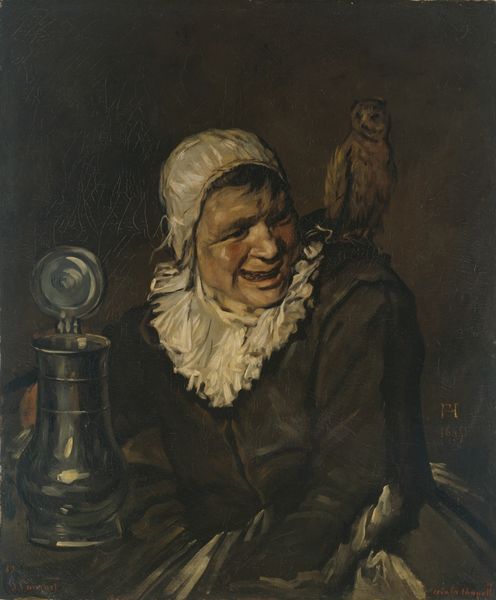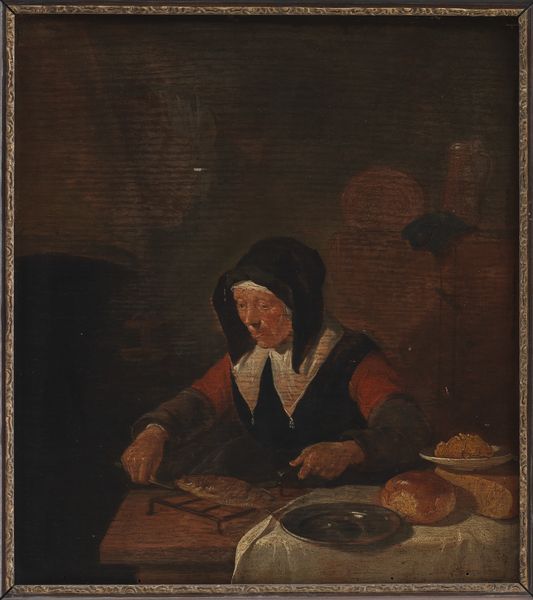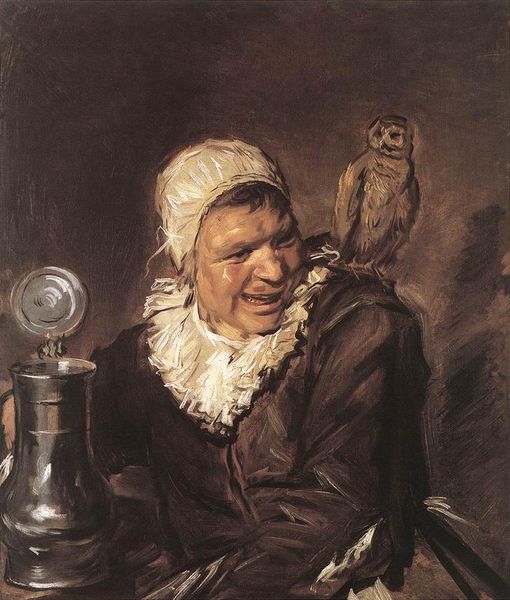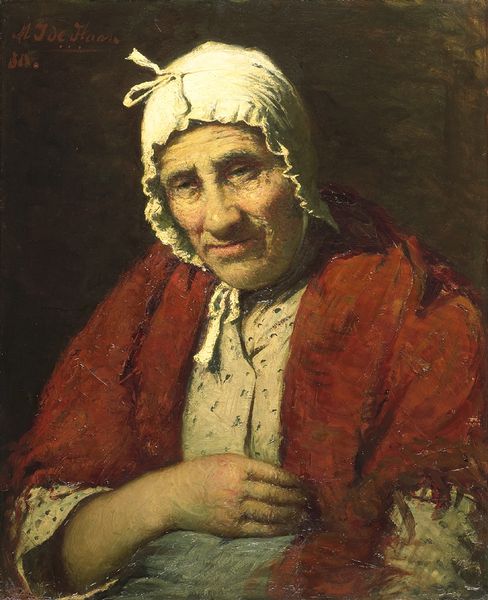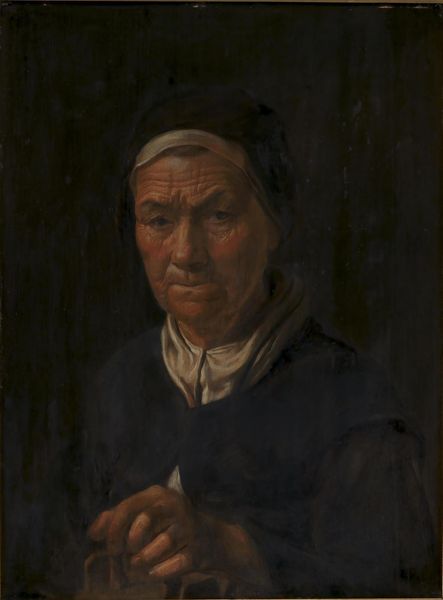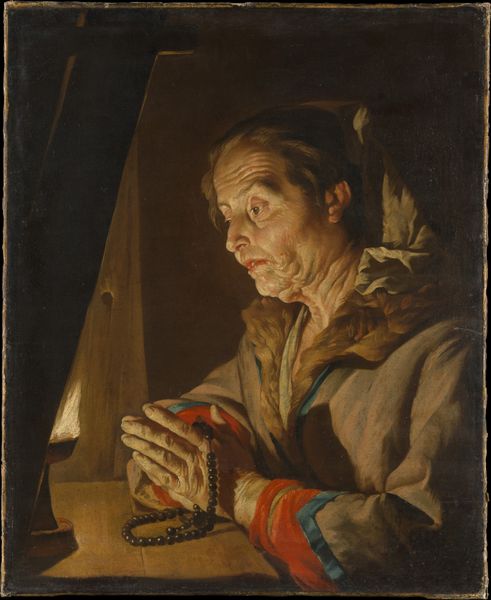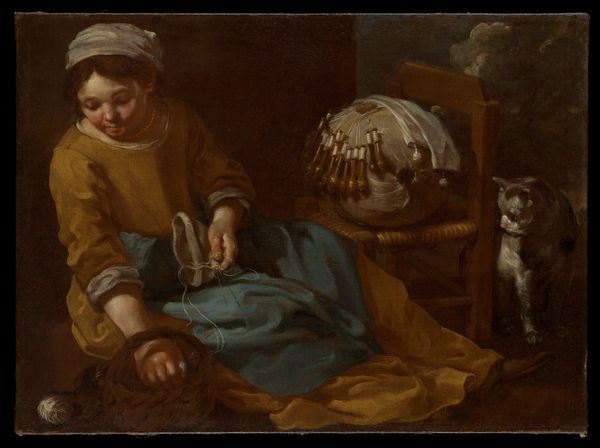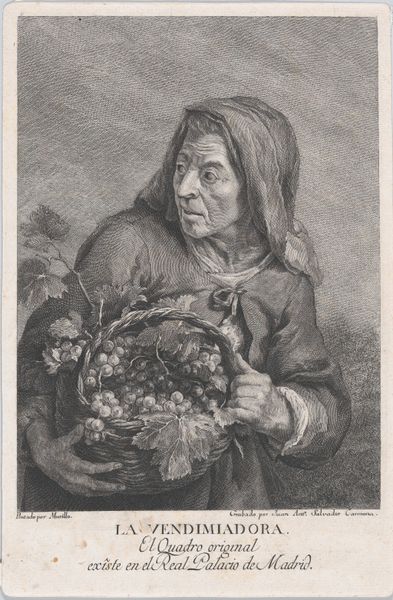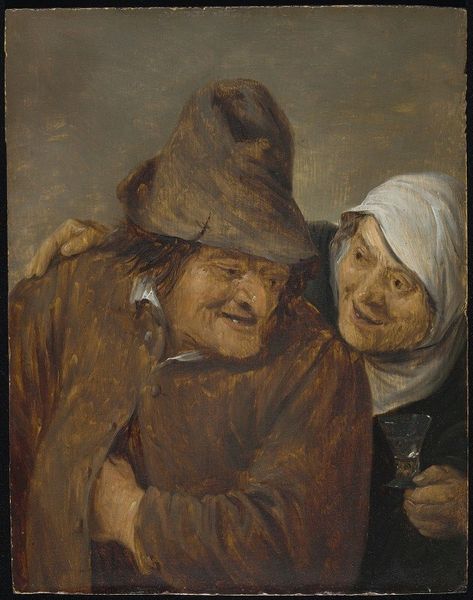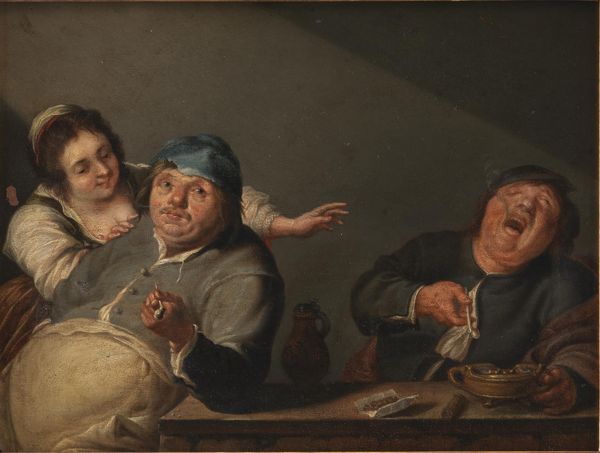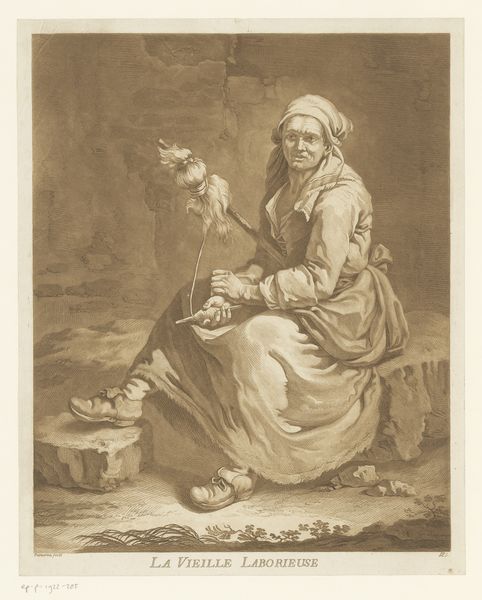
painting, oil-paint
#
portrait
#
narrative-art
#
baroque
#
dutch-golden-age
#
painting
#
caricature
#
oil-paint
#
figuration
#
genre-painting
#
realism
Dimensions: 29 1/2 x 24 in. (74.9 x 61 cm)
Copyright: Public Domain
Curator: Here we have Frans Hals’ “Malle Babbe,” estimated to have been painted sometime between 1625 and 1649. It's currently housed here at the Metropolitan Museum of Art. Editor: My first thought is, what an incredible, unsettling energy! The immediacy of her expression, caught in what looks like mid-laugh, the bird…it all makes for a striking composition. Curator: Indeed. Hals’ loose brushwork brings a vitality to the subject, seemingly capturing a fleeting moment. He had an uncanny ability to render not just likeness, but the personality itself. I find it interesting how much debate there is over the model; some claim this is just a genre painting while others claim she represents an actual historical figure. Regardless, it is intriguing how the painting offers insight into the cultural position of marginalized members of society in the Dutch Golden Age. Editor: Absolutely. You know, looking at the paint application, the texture and viscosity of the oil paint itself play such a crucial role here. Think about the societal view of “craftsmanship.” It is very clear how he emphasizes materials to convey meaning. Her somewhat ragged attire suggests she’s far removed from the polished, upper-class subjects typically immortalized on canvas at the time. Also note that owl. It might appear strange now, but during the 17th century the symbolism could point toward folly, madness, or drunkenness—an attribute often associated with low-class citizens and female social deviants. Curator: And to further emphasize your argument, the production process of paints themselves has socio-cultural meanings attached, right? Certain pigments were rarer or more expensive than others which had its impact on who or what the painting portrayed. Editor: Precisely! The very act of applying these materials in a portrait challenges established power structures! It makes you question who the institutions choose to canonize as significant enough for display. It questions not only who is depicted but also the purpose the images were intended to play in society. Curator: An extraordinary portrayal offering much to contemplate! I will surely see this artwork from a different angle after this dialogue. Editor: Agreed. It’s pieces like this that constantly remind us how much art challenges, reflects, and interrogates the power dynamics within its own time and the current time in which it’s displayed.
Comments
No comments
Be the first to comment and join the conversation on the ultimate creative platform.
